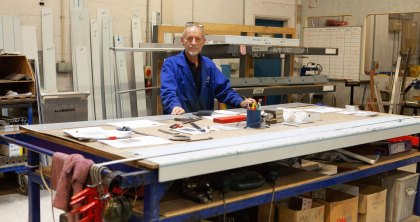- Home
- Rooflights
- Roof Windows
- Bespoke Service
- Inspiration
- Resources
- Guide to Extensions
- Approved Document L Whitepaper
- Guide to Specifying Glass in Rooflights
- Specifying Roof Terraces Guide
- Rooflights and Roof Windows Guide
- Inspirational Kitchen Design Ideas
- Thermal Performance Whitepaper
- Approved Document Q Whitepaper
- Approved Document K Whitepaper
- Guide to Improved Daylight & Ventilation
- Approved Document F Whitepaper
- Approved Document O Whitepaper
- Case Studies
- Blog
- ESG
- About us
- Contact us
We have already demonstrated that the use of thermal breaks within aluminium extrusions can be an effective way of managing heat transfer and cold bridging. However there are occasions where the design of the framework means that including a thermal break can actually reduce performance.
The simulation below shows a fixed glass rooflight bonded into an aluminium t-section extrusion. The first design does not include a thermal break but performance is still acceptable due to there being no exposed surface area of the internal section.
The second design shows a revised frame that has been increased in size in order to accommodate thermal breaks. It clearly shows that the larger internal surface area is causing the frame to perform less efficiently and cold air is being transferred from the double glazed unit to the framework.
In terms of actual values, based on a 1000mm x 1000mm rooflight, the original frame without thermal break is achieving an overall u-value of 1.4W/m2k Uw compared to the lesser performing redesign including thermal breaks of 1.9W/m2k Uw.
As always, when dealing with thermal performance and u-values it is important to make sure that the manufacturers data refers to both glass and framework combined.
For more information on the thermal performance of glass rooflights, contact the technical team or book a CPD.













